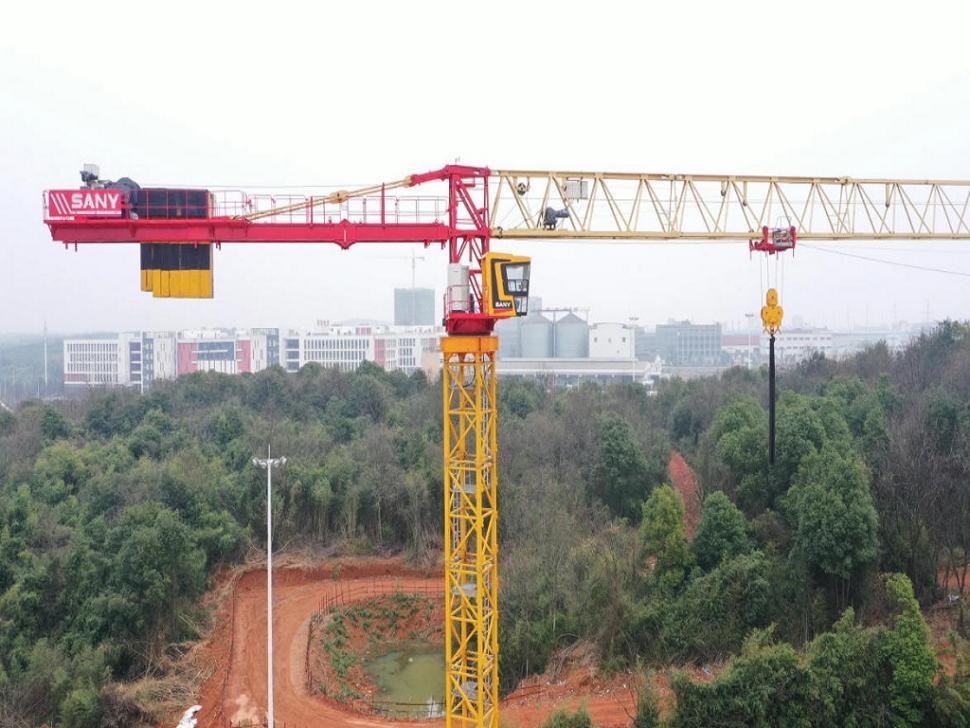Tower Crane Types and Site-Specific Selection Guide
Tower cranes are essential for construction projects, providing the lifting power needed to move materials safely and efficiently. Selecting the right tower crane is crucial for project success and safety. This guide helps you understand the main types of tower cranes and provides practical advice on selecting the best option for your specific site requirements.
Main Types of Tower Cranes
Hammerhead Tower Cranes
Hammerhead tower cranes are the most common type used in construction. They feature a horizontal jib with a trolley that moves between the jib and tower. Known for their versatility and stability, they are ideal for medium to large construction sites where lifting and moving heavy loads over a large area are necessary. Their design allows precise positioning of materials, making them a go-to choice for many projects.
Luffing Jib Tower Cranes
Luffing jib tower cranes have a movable jib that allows them to work in tight spaces. Unlike hammerhead cranes, the jib can be raised or lowered, reducing the crane’s swing radius and making it perfect for urban environments with multiple obstacles. They are ideal for high-rise building sites where space is limited but high loads need lifting. These cranes offer the flexibility to operate efficiently amidst urban clutter.
Self-Erecting Tower Cranes
Self-erecting tower cranes are compact and easy to transport, making them perfect for small to medium-sized projects. These cranes can be set up quickly and require less space, enabling operations to begin without delay. They are often used in residential or low-rise commercial projects where project timelines are tight. Their straightforward assembly process makes them a favorite for projects with frequent site changes.
Key Factors for Choosing the Right Tower Crane
Site Layout and Space Constraints
Consider your site’s layout when selecting a tower crane. Space constraints influence the type and positioning of the crane. Evaluate the ground space, obstructions, and operating radius. A crane that fits into your site’s layout seamlessly will enhance productivity and safety. Ensuring ample space around the crane reduces risks and improves maneuverability, especially in congested areas.
Load Capacity and Reach Requirements
Evaluate the load capacities required and the reach needed for your project. Each crane type offers different load limits and reach capabilities. Understanding these helps in selecting a crane that aligns with the specific lifting demands of your construction project. A mismatch could lead to inefficiencies or even hazardous situations on-site, making it crucial to analyze these parameters thoroughly.
Height and Climbing Ability
Projects with towering structures necessitate cranes with impressive height and climbing capabilities. Match the crane’s height features with your project’s demands to ensure efficient and safe operations. Adjustable height configurations allow cranes to grow with the construction as it progresses. Consider cranes with self-climbing features for projects that steadily increase in height over time.
Safety and Efficiency Considerations
Wind and Weather Conditions
Wind and weather conditions play a major role in crane operations. Ensure your crane can cope with site-specific environmental challenges. Choose cranes with features like wind speed alarms or weather-proofing to maintain operations safely in varied conditions. Proper evaluation of local climate guides crane selection, helping to mitigate potential hazards posed by unpredictable weather elements.
Operator Visibility and Control
Crane operators must have clear visibility of the work area for safety and efficiency. Opt for cranes with cabins ensuring optimal sight lines and intuitive control systems. Enhanced visibility helps prevent accidents and improves precision in load handling. Advanced control systems simplify operations, contributing to smoother all-around project progress and minimizing risks.
Assembly, Dismantling, and Maintenance
Consider the assembly and dismantling process when selecting a crane. Effortless assembling and quick dismantling reduce downtime and labor costs. Also, regular maintenance is vital for crane longevity and safety. Ensure your crane has a straightforward maintenance schedule and access to spare parts. A well-maintained crane reduces the likelihood of operational hiccups and safety issues.
Practical Tips for Site-Specific Selection
Matching Crane to Project Scale
Match the crane size with your project’s scale. Large projects require robust cranes with extensive reach and lifting capacities, while smaller ventures benefit from compact, agile models. Assessing project size helps ensure efficiency and cost-effectiveness without overextending resources. A balanced approach to scale ensures seamless integration of the crane into project dynamics.
Assessing Ground Conditions and Foundation
Examine the ground conditions where the crane will operate. Solid, stable foundations are crucial for crane stability. Identify and address any uneven or unstable ground conditions to prevent accidents. Ensure your selected crane is compatible with the site’s foundation, adapting as necessary to maintain safe and efficient operations amidst diverse geological challenges.
Coordination with Other Site Equipment
Ensure the tower crane coordinates effectively with other on-site equipment. Compatibility with equipment, such as trucks or loaders, ensures streamlined operations. Analyze logistical flows and equipment compatibility to avoid workflow disruptions. Proper coordination minimizes project delays and maximizes productivity, paving the way for smooth task overlaps and efficient on-site communications.
Conclusion
Choosing the right tower crane impacts the success and safety of your construction project. By understanding the types available and considering site-specific factors, you can select the crane that best meets your project needs. Focus on safety, efficiency, and practicality to ensure your crane choice enhances project workflow and meets operational challenges head-on. Make informed decisions for a successful construction outcome.











